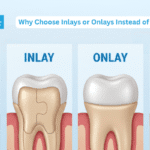Nobody would like to lose a tooth, and at times it cannot be avoided. Knowing the motivation behind extractions will enable you to make the decision without regret. Dentists do not extract teeth out of the blue, but to safeguard your general health.
Severe Tooth Decay
The most typical use of extractions is for tooth decay. The cavities start as simple, easy-to-handle points of destruction. A dentist could remove the decay and fill in the tooth with a filling or crown with early intervention. But as the rot gets deep into the pulp, the heart of the tooth – which is the living part – the frame is too feeble to ever be restored.
Why are fillings and crowns not enough?
Even a crown cannot help the situation, even when the damage has eaten away most of the enamel and dentin. The tooth will not be left naturally with sufficient healthy substance to support a restoration. A dentist may also try a root canal to salvage it; however, once the infection has gone too deep or recurs, the safest way is to extract it.
Effects of postponing extraction
Leaving a tooth in a deplorable condition can lead to an infection of the jawbone, the rest of the teeth, and even blood. At that point, a localized health issue of the teeth may develop into a global health crisis. Extraction eliminates the source of the infection and lets the gums and bone heal.
Advanced Gum Disease
Another significant cause of tooth loss is gum disease or periodontitis. In contrast to decay, which deteriorates the tooth itself, gum disease destroys the base on which teeth rest, the bone and tissue.
When teeth become loose
Gum disease presents itself in the initial phases through swelling, bleeding, and foul breath. Unattended, it corrodes the bone surrounding the teeth. When teeth begin to move or become loose, there is no way to stabilize them. Extraction averts the additional loss of bones and aids in managing the infection.
Protecting nearby teeth
The failure of one tooth may endanger other teeth. Dentists can save the remaining teeth by extracting the highly compromised ones and working on their salvaging using periodontal therapy. In most instances, extracted teeth are replaced with implants or bridges by the patients afterwards, when the gums and the bone are healthier.
Impacted Wisdom Teeth
Wisdom teeth are notorious for being mischievous. The molars are the very last to grow, generally at the age of 17-25. To most, the jaw is not even large enough to hold them.
Common problems with wisdom teeth
Impaction: The tooth becomes lodged beneath or under the gums, or not all of the tooth erupts.
Crowding: Erupting wisdom teeth cause the existing molars to be crowded out of shape.
Risk of infection: Food and bacteria gather around half-erupted teeth, causing painful gum infections, requiring removal
Although they may not cause pain at the moment, most dentists advise the removal of wisdom teeth at an early age. The early removal is better, and young adults have a quicker healing process, avoiding such problems as cysts, damaged nerves, or moving teeth in later life.
Overcrowding
Not everything extracted is a result of disease or damage. There are times when healthy teeth are forced to exert. Orthodontists often order additional extractions to place braces on patients with small jaws and big teeth.
Why space matters in orthodontics
To allow the proper alignment of the teeth, they need space in the jaw. Unless there is space, orthodontists can extract premolars so that the rest can straighten. In the absence of extraction, braces may not fully treat the bite or may cause a risk of teeth moving back following treatment.
The bigger picture
Although the process of extracting healthy teeth may sound counterintuitive, it is done in the long term to attain correct bite placement, ease of cleaning, and minimized susceptibility to future gum disease.
Severe Trauma or Breaks
Accidents occur, either due to a fall, sporting injury, or biting something hard. Bonding or crowns can be used to repair some breaks, but others are too severe.
Where extraction is the sole option.
When a fracture goes below the gum line or cuts the root, then there is no method of regaining stability. Once broken, there is a risk that a root cannot be repaired or even shielded, and its continued presence may cause an infection and bone injury. They are inevitably extracted in such situations.
The following steps are after the removal
Dentists typically suggest replacing lost teeth as quickly as possible, particularly when they are not wisdom teeth. Implant bridges, or partial dentures, are used to add functionality and ensure that other teeth do not drift into the empty socket.
Risk of Infection Before Other Medical Treatments
In some cases, extractions are performed not due to the tooth actively causing problems, but due to the possibility that it might do so in the near future. This is more so the case with patients who are pre-planning significant medical procedures.
Medical conditions that require extraction.
Chemotherapy: Suppresses the immune system and leaves patients susceptible to infections.
Organ transplants: Anti-rejection drugs suppress immunity.
Heart surgery: Tooth-related infections may be dangerous to the recovery.
Why proactive removal matters
Here, dentists extract doubtful teeth with deep cavities, advanced periodontal disease, or old root canals to avoid infection, which the body cannot effectively combat during therapy.
Teeth Affected by Baby Tooth Retention
A persistent baby tooth that fails to fall out on time may prevent a permanent tooth in children and teenagers. Replacing the baby tooth cleans up the path to normal growth.
The prevention of orthodontic complications.
When permanent teeth start to erupt in an incorrect position, it is because the baby teeth remain in too long, causing crowding and trouble with the bite. Strategic extraction avoids years of orthodontic correction later.
Preparing for Dentures
In other situations, the remaining teeth have to be removed to provide the patient with a complete denture. Although some may still be intact, irregular teeth or those that are dislodged complicate the process of denture fitting. Extractions also provide a healthy base upon which dentures can be placed comfortably.
Pain and Discomfort as a Warning Sign
Although pain does not always indicate extraction, it usually is an indication that something significant is occurring. Constant toothache, jaw swelling, or pain must not be disregarded. Through the symptoms, dentists are able to conclude whether the tooth can be rescued or whether it has to be extracted, using the X-rays
Conclusion
Removal of teeth is not something to laugh at. Dentists do so when it cannot be repaired or when your health is at risk by retaining the tooth. Extraction, whether due to decay or gum disease, injury, or overcrowding, is the beginning of improved long-term oral health.





